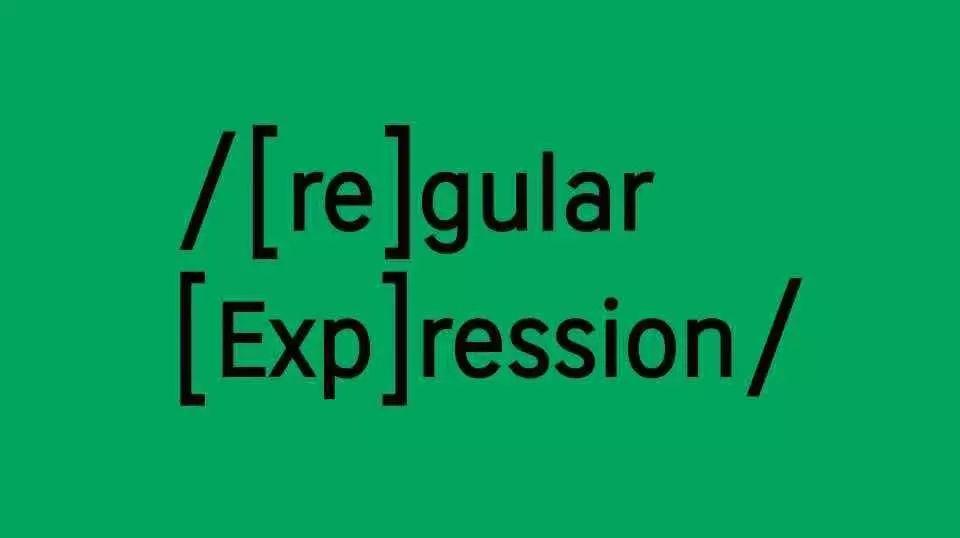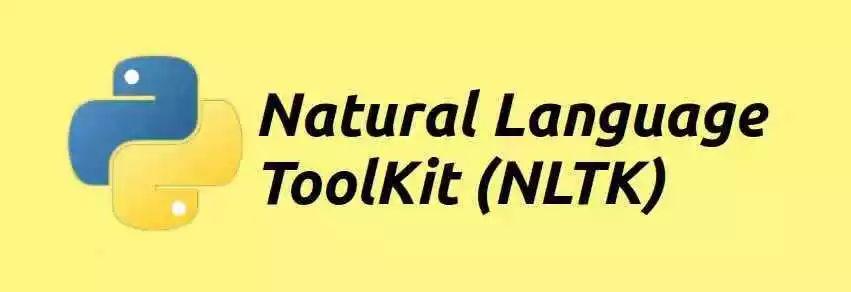NLPer入门指南 | 完美第一步

译者 | Arno
来源 | Analytics Vidhya
概览
- 想开始学习自然语言处理(NLP)吗?如果是,这是完美的第一步。
-
学习如何进行标识化(tokenization)[1]——这是为构建NLP模型准备数据的一个关键步骤
-
我们演示了6种对英文文本数据进行标识化的方法

介绍
你对互联网上的大量文本数据着迷吗?你是否正在寻找处理这些文本数据的方法,但不确定从哪里开始?毕竟,机器识别的是数字,而不是我们语言中的字母。在机器学习中,这可能是一个棘手的问题。
那么,我们如何操作和处理这些文本数据来构建模型呢?答案就在自然语言处理(NLP)的奇妙世界中。
解决一个NLP问题是一个多阶段的过程。在进入建模阶段之前,我们需要首先处理非结构化文本数据。处理数据包括以下几个关键步骤:
-
标识化
-
预测每个单词的词性
-
词形还原
-
识别和删除停止词,等等
在本文中,我们将讨论第一步—标识化。我们将首先了解什么是标识化,以及为什么在NLP中需要标识化。然后,我们将研究在Python中进行标识化的六种独特方法。
阅读本文不需要什么先决条件,任何对NLP或数据科学感兴趣的人都可以跟读。
在NLP中,什么是标识化?
标识化是处理文本数据时最常见的任务之一。但是标识化(tokenization)具体是什么意思呢?
标识化(tokenization)本质上是将短语、句子、段落或整个文本文档分割成更小的单元,例如单个单词或术语。每个较小的单元都称为标识符(token)
看看下面这张图片,你就能理解这个定义了:

标识符可以是单词、数字或标点符号。在标识化中,通过定位单词边界创建更小的单元。等等,可能你又有疑问,什么是单词边界呢?
单词边界是一个单词的结束点和下一个单词的开始。而这些标识符被认为是词干提取(stemming)和词形还原(lemmatization )的第一步。
为什么在NLP中需要标识化?
在这里,我想让你们思考一下英语这门语言。想一句任何你能想到的一个英语句子,然后在你接下去读这部分的时候,把它记在心里。这将帮助你更容易地理解标识化的重要性。
在处理一种自然语言之前,我们需要识别组成字符串的单词,这就是为什么标识化是处理NLP(文本数据)的最基本步骤。这一点很重要,因为通过分析文本中的单词可以很容易地解释文本的含义。
让我们举个例子,以下面的字符串为例:
“This is a cat.”
你认为我们对这个字符串进行标识化之后会发生什么?是的,我们将得到[‘ This ‘, ‘ is ‘, ‘ a ‘, cat ‘]。
这样做有很多用途,我们可以使用这个标识符形式:
-
计数文本中出现的单词总数
-
计数单词出现的频率,也就是某个单词出现的次数
之外,还有其他用途。我们可以提取更多的信息,这些信息将在以后的文章中详细讨论。现在,是我们深入研究本文的主要内容的时候了——在NLP中进行标识化的不同方法。
在Python中执行标识化的方法
我们将介绍对英文文本数据进行标识化的六种独特方法。我已经为每个方法提供了Python代码,所以你可以在自己的机器上运行示例用来学习。
1.使用python的split()函数进行标识化
让我们从split()方法开始,因为它是最基本的方法。它通过指定的分隔符分割给定的字符串后返回字符串列表。默认情况下,split()是以一个或多个空格作为分隔符。我们可以把分隔符换成任何东西。让我们来看看。
单词标识化:
text = """Founded in 2002, SpaceX’s mission is to enable humans to become a spacefaring civilization and a multi-planet
species by building a self-sustaining city on Mars. In 2008, SpaceX’s Falcon 1 became the first privately developed
liquid-fuel launch vehicle to orbit the Earth."""
# 以空格为分隔符进行分割
text.split()
Output : ['Founded', 'in', '2002,', 'SpaceX’s', 'mission', 'is', 'to', 'enable', 'humans',
'to', 'become', 'a', 'spacefaring', 'civilization', 'and', 'a', 'multi-planet',
'species', 'by', 'building', 'a', 'self-sustaining', 'city', 'on', 'Mars.', 'In',
'2008,', 'SpaceX’s', 'Falcon', '1', 'became', 'the', 'first', 'privately',
'developed', 'liquid-fuel', 'launch', 'vehicle', 'to', 'orbit', 'the', 'Earth.']
句子标识化:
这类似于单词标识化。这里,我们在分析中研究句子的结构。一个句子通常以句号(.)结尾,所以我们可以用”.”作为分隔符来分割字符串:
text = """Founded in 2002, SpaceX’s mission is to enable humans to become a spacefaring civilization and a multi-planet
species by building a self-sustaining city on Mars. In 2008, SpaceX’s Falcon 1 became the first privately developed
liquid-fuel launch vehicle to orbit the Earth."""
# 以"."作为分割符进行分割
text.split('. ')
Output : ['Founded in 2002, SpaceX’s mission is to enable humans to become a spacefaring
civilization and a multi-planet nspecies by building a self-sustaining city on
Mars',
'In 2008, SpaceX’s Falcon 1 became the first privately developed nliquid-fuel
launch vehicle to orbit the Earth.']
使用Python的split()方法的一个主要缺点是一次只能使用一个分隔符。另一件需要注意的事情是——在单词标识化中,split()没有将标点符号视为单独的标识符。
2.使用正则表达式(RegEx)进行标识化

让我们理解正则表达式是什么,它基本上是一个特殊的字符序列,使用该序列作为模式帮助你匹配或查找其他字符串或字符串集。
我们可以使用Python中的re库来处理正则表达式。这个库预安装在Python安装包中。
现在,让我们记住正则表达式并执行单词标识化和句子标识化。
单词标识化:
import re
text = """Founded in 2002, SpaceX’s mission is to enable humans to become a spacefaring civilization and a multi-planet
species by building a self-sustaining city on Mars. In 2008, SpaceX’s Falcon 1 became the first privately developed
liquid-fuel launch vehicle to orbit the Earth."""
tokens = re.findall("[w']+", text)
tokens
Output : ['Founded', 'in', '2002', 'SpaceX', 's', 'mission', 'is', 'to', 'enable',
'humans', 'to', 'become', 'a', 'spacefaring', 'civilization', 'and', 'a',
'multi', 'planet', 'species', 'by', 'building', 'a', 'self', 'sustaining',
'city', 'on', 'Mars', 'In', '2008', 'SpaceX', 's', 'Falcon', '1', 'became',
'the', 'first', 'privately', 'developed', 'liquid', 'fuel', 'launch', 'vehicle',
'to', 'orbit', 'the', 'Earth']
re.findall()函数的作用是查找与传递给它的模式匹配的所有单词,并将其存储在列表中。w表示“任何字符”,通常表示字母数字和下划线(_)。+表示任意出现次数。因此[w']+表示代码应该找到所有的字母数字字符,直到遇到任何其他字符为止。
句子标识化:
要执行句子标识化,可以使用re.split()函数,将通过传递一个模式给函数将文本分成句子。
import re
text = """Founded in 2002, SpaceX’s mission is to enable humans to become a spacefaring civilization and a multi-planet
species by building a self-sustaining city on, Mars. In 2008, SpaceX’s Falcon 1 became the first privately developed
liquid-fuel launch vehicle to orbit the Earth."""
sentences = re.compile('[.!?] ').split(text)
sentences
Output : ['Founded in 2002, SpaceX’s mission is to enable humans to become a spacefaring
civilization and a multi-planet nspecies by building a self-sustaining city on
Mars.',
'In 2008, SpaceX’s Falcon 1 became the first privately developed nliquid-fuel
launch vehicle to orbit the Earth.']
这里,我们相比split()方法上有一个优势,因为我们可以同时传递多个分隔符。在上面的代码中,我们使用了的re.compile()函数,并传递一个模式[.?!]。这意味着一旦遇到这些字符,句子就会被分割开来。
有兴趣阅读更多关于正则表达式的信息吗?下面的参考资料将帮助你开始学习NLP中的正则表达式:
https://www.analyticsvidhya.com/blog/2015/06/regular-expression-python/
https://www.analyticsvidhya.com/blog/2017/03/extracting-information-from-reports-using-regular-expressons-library-in-python/
3.使用NLTK进行标识化

NLTK是Natural Language ToolKit的缩写,是用Python编写的用于符号和统计自然语言处理的库。
你可以使用以下命令安装NLTK:
pip install –user -U nltk
NLTK包含一个名为tokenize()的模块,它可以进一步划分为两个子类别:
-
Word tokenize:我们使用word_tokenize()方法将一个句子分割成标识符
-
Sentence tokenize:我们使用sent_tokenize()方法将文档或段落分割成句子
让我们一个一个来看是怎么操作的。
单词标识化:
from nltk.tokenize import word_tokenize
text = """Founded in 2002, SpaceX’s mission is to enable humans to become a spacefaring civilization and a multi-planet
species by building a self-sustaining city on Mars. In 2008, SpaceX’s Falcon 1 became the first privately developed
liquid-fuel launch vehicle to orbit the Earth."""
word_tokenize(text)
Output: ['Founded', 'in', '2002', ',', 'SpaceX', '’', 's', 'mission', 'is', 'to', 'enable',
'humans', 'to', 'become', 'a', 'spacefaring', 'civilization', 'and', 'a',
'multi-planet', 'species', 'by', 'building', 'a', 'self-sustaining', 'city', 'on',
'Mars', '.', 'In', '2008', ',', 'SpaceX', '’', 's', 'Falcon', '1', 'became',
'the', 'first', 'privately', 'developed', 'liquid-fuel', 'launch', 'vehicle',
'to', 'orbit', 'the', 'Earth', '.']
注意到NLTK是如何考虑将标点符号作为标识符的吗?因此,对于之后的任务,我们需要从初始列表中删除这些标点符号。
句子标识化:
from nltk.tokenize import sent_tokenize
text = """Founded in 2002, SpaceX’s mission is to enable humans to become a spacefaring civilization and a multi-planet
species by building a self-sustaining city on Mars. In 2008, SpaceX’s Falcon 1 became the first privately developed
liquid-fuel launch vehicle to orbit the Earth."""
sent_tokenize(text)
Output: ['Founded in 2002, SpaceX’s mission is to enable humans to become a spacefaring
civilization and a multi-planet nspecies by building a self-sustaining city on
Mars.',
'In 2008, SpaceX’s Falcon 1 became the first privately developed nliquid-fuel
launch vehicle to orbit the Earth.']
4.使用`spaCy`库进行标识化

我喜欢spaCy这个库,我甚至不记得上次我在做NLP项目时没有使用它是什么时候了。是的,它就是那么有用。
spaCy是一个用于高级自然语言处理(NLP)的开源库。它支持超过49种语言,并具有最快的的计算速度。
在Linux上安装Spacy的命令:
pip install -U spacy
python -m spacy download en
要在其他操作系统上安装它,可以通过下面链接查看:
https://spacy.io/usage
所以,让我们看看如何利用spaCy的神奇之处来进行标识化。我们将使用spacy.lang.en以支持英文。
单词标识化:
from spacy.lang.en import English
# 加载英文分词器,标记器、解析器、命名实体识别和词向量
nlp = English()
text = """Founded in 2002, SpaceX’s mission is to enable humans to become a spacefaring civilization and a multi-planet
species by building a self-sustaining city on Mars. In 2008, SpaceX’s Falcon 1 became the first privately developed
liquid-fuel launch vehicle to orbit the Earth."""
#"nlp" 对象用于创建具有语言注解的文档
my_doc = nlp(text)
# 创建单词标识符列表
token_list = []
for token in my_doc:
token_list.append(token.text)
token_list
Output : ['Founded', 'in', '2002', ',', 'SpaceX', '’s', 'mission', 'is', 'to', 'enable',
'humans', 'to', 'become', 'a', 'spacefaring', 'civilization', 'and', 'a',
'multi', '-', 'planet', 'n', 'species', 'by', 'building', 'a', 'self', '-',
'sustaining', 'city', 'on', 'Mars', '.', 'In', '2008', ',', 'SpaceX', '’s',
'Falcon', '1', 'became', 'the', 'first', 'privately', 'developed', 'n',
'liquid', '-', 'fuel', 'launch', 'vehicle', 'to', 'orbit', 'the', 'Earth', '.']
句子标识化:
from spacy.lang.en import English
# 加载英文分词器,标记器、解析器、命名实体识别和词向量
nlp = English()
# 创建管道 'sentencizer' 组件
sbd = nlp.create_pipe('sentencizer')
# 将组建添加到管道中
nlp.add_pipe(sbd)
text = """Founded in 2002, SpaceX’s mission is to enable humans to become a spacefaring civilization and a multi-planet
species by building a self-sustaining city on Mars. In 2008, SpaceX’s Falcon 1 became the first privately developed
liquid-fuel launch vehicle to orbit the Earth."""
# "nlp" 对象用于创建具有语言注解的文档
doc = nlp(text)
# 创建句子标识符列表
sents_list = []
for sent in doc.sents:
sents_list.append(sent.text)
sents_list
Output : ['Founded in 2002, SpaceX’s mission is to enable humans to become a spacefaring
civilization and a multi-planet nspecies by building a self-sustaining city on
Mars.',
'In 2008, SpaceX’s Falcon 1 became the first privately developed nliquid-fuel
launch vehicle to orbit the Earth.']
在执行NLP任务时,与其他库相比,spaCy的速度相当快(是的,甚至相较于NLTK)。我鼓励你收听下面的DataHack Radio播客,以了解spaCy是如何创建的,以及你可以在哪里使用它:
DataHack Radio #23: Ines Montani and Matthew Honnibal – The Brains behind spaCy
之外,下面是关于spaCy的一个更深入的教程:
Natural Language Processing Made Easy – using SpaCy (in Python)
5.使用Keras进行标识化

Keras!!目前业界最热门的深度学习框架之一。它是Python的一个开源神经网络库。Keras非常容易使用,也可以运行在TensorFlow之上。
在NLP上下文中,我们可以使用Keras处理我们通常收集到的非结构化文本数据。
在你的机子上,只需要一行代码就可以在机器上安装Keras:
pip install Keras
让我们开始进行实验,要使用Keras执行单词标记化,我们使用keras.preprocessing.text类中的text_to_word_sequence方法.
让我们看看keras是怎么做的。
单词标识化:
from keras.preprocessing.text import text_to_word_sequence
# 文本数据
text = """Founded in 2002, SpaceX’s mission is to enable humans to become a spacefaring civilization and a multi-planet
species by building a self-sustaining city on Mars. In 2008, SpaceX’s Falcon 1 became the first privately developed
liquid-fuel launch vehicle to orbit the Earth."""
# 标识化
result = text_to_word_sequence(text)
result
Output : ['founded', 'in', '2002', 'spacex’s', 'mission', 'is', 'to', 'enable', 'humans',
'to', 'become', 'a', 'spacefaring', 'civilization', 'and', 'a', 'multi',
'planet', 'species', 'by', 'building', 'a', 'self', 'sustaining', 'city', 'on',
'mars', 'in', '2008', 'spacex’s', 'falcon', '1', 'became', 'the', 'first',
'privately', 'developed', 'liquid', 'fuel', 'launch', 'vehicle', 'to', 'orbit',
'the', 'earth']
Keras在进行标记之前将所有字母转换成小写。你可以想象,这为我们节省了很多时间!
6.使用Gensim进行标识化
我们介绍的最后一个标识化方法是使用Gensim库。它是一个用于无监督主题建模和自然语言处理的开源库,旨在从给定文档中自动提取语义主题。
下面我们在机器上安装Gensim:
pip install gensim
我们可以用gensim.utils类导入用于执行单词标识化的tokenize方法。
单词标识化:
from gensim.utils import tokenize
text = """Founded in 2002, SpaceX’s mission is to enable humans to become a spacefaring civilization and a multi-planet
species by building a self-sustaining city on Mars. In 2008, SpaceX’s Falcon 1 became the first privately developed
liquid-fuel launch vehicle to orbit the Earth."""
list(tokenize(text))
Outpur : ['Founded', 'in', 'SpaceX', 's', 'mission', 'is', 'to', 'enable', 'humans', 'to',
'become', 'a', 'spacefaring', 'civilization', 'and', 'a', 'multi', 'planet',
'species', 'by', 'building', 'a', 'self', 'sustaining', 'city', 'on', 'Mars',
'In', 'SpaceX', 's', 'Falcon', 'became', 'the', 'first', 'privately',
'developed', 'liquid', 'fuel', 'launch', 'vehicle', 'to', 'orbit', 'the',
'Earth']
句子标识化:
from gensim.summarization.textcleaner import split_sentences
text = """Founded in 2002, SpaceX’s mission is to enable humans to become a spacefaring civilization and a multi-planet
species by building a self-sustaining city on Mars. In 2008, SpaceX’s Falcon 1 became the first privately developed
liquid-fuel launch vehicle to orbit the Earth."""
result = split_sentences(text)
result
Output : ['Founded in 2002, SpaceX’s mission is to enable humans to become a spacefaring
civilization and a multi-planet ',
'species by building a self-sustaining city on Mars.',
'In 2008, SpaceX’s Falcon 1 became the first privately developed ',
'liquid-fuel launch vehicle to orbit the Earth.']
你可能已经注意到,Gensim对标点符号非常严格。每当遇到标点符号时,它就会分割。在句子分割中,Gensim在遇到n时会分割文本,而其他库则是忽略它。
总结
标识化是整个处理NLP任务中的一个关键步骤。如果不先处理文本,我们就不能简单地进入模型构建部分。
在本文中,对于给定的英文文本,我们使用了六种不同的标识化方法(单词和句子)。当然,还有其他的方法,但是这些方法已经足够让你开始进行标识化了。
[1]: 有部分中文将其翻译为分词,但中文文本和英文文本在分词上有所差别,且在本文中,不只演示将英文文本段落分割成单词,还演示将其分割成句子,所以在本文中将其翻译为标识化而不是分词。
你也许还想看:
● 5分钟配置好你的AI开发环境
● 入门 | Tensorflow实战讲解神经网络搭建详细过程
欢迎扫码关注:
原创文章,作者:fendouai,如若转载,请注明出处:https://panchuang.net/2019/07/24/e3f118e98b/



